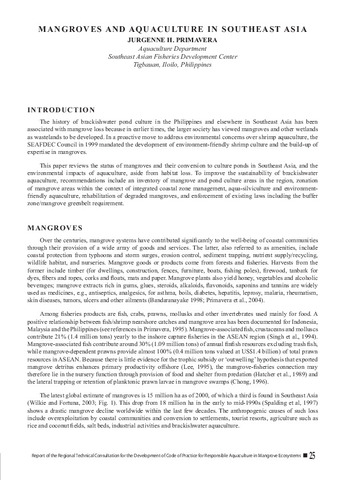Mangroves and aquaculture in Southeast Asia.
| dc.contributor.author | Primavera, Jurgenne | |
| dc.date.accessioned | 2011-10-27T07:20:30Z | |
| dc.date.available | 2011-10-27T07:20:30Z | |
| dc.date.issued | 2005 | |
| dc.identifier.uri | http://hdl.handle.net/10862/711 | |
| dc.description.abstract | The history of brackishwater pond culture in the Philippines and elsewhere in Southeast Asia has been associated with mangrove loss because in earlier times, the larger society has viewed mangroves and other wetlands as wastelands to be developed. In a proactive move to address environmental concerns over shrimp aquaculture, the SEAFDEC Council in 1999 mandated the development of environment-friendly shrimp culture and the build-up of expertise in mangroves. This paper reviews the status of mangroves and their conversion to culture ponds in Southeast Asia, and the environmental impacts of aquaculture, aside from habitat loss. To improve the sustainability of brackishwater aquaculture, recommendations include an inventory of mangrove and pond culture areas in the region, zonation of mangrove areas within the context of integrated coastal zone management, aqua-silviculture and environmentfriendly aquaculture, rehabilitation of degraded mangroves, and enforcement of existing laws including the buffer zone/mangrove greenbelt requirement. | en |
| dc.publisher | Aquaculture Department, Southeast Asian Fisheries Development Center | en |
| dc.title | Mangroves and aquaculture in Southeast Asia. | en |
| dc.type | Book chapter | en |


